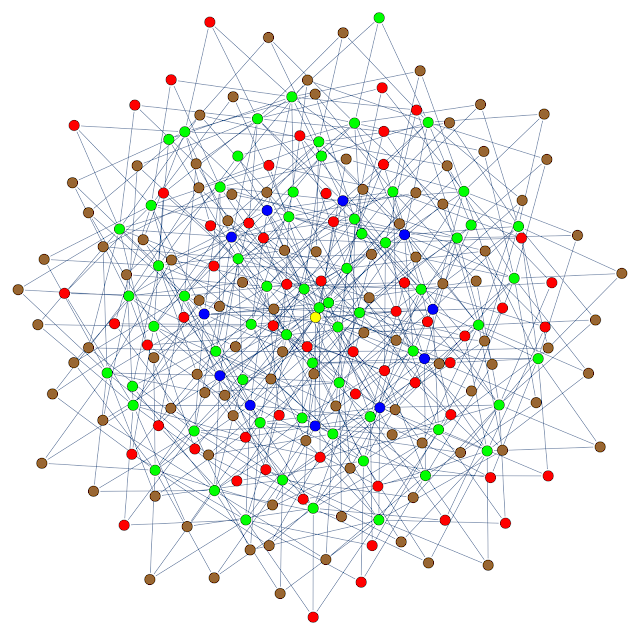A sphere in binary 11-space
In my discrete math class this week, did an example of a code that encodes three bits to eleven bits and can correct all two-bit errors. This particular code was not meant to be particularly optimal, but for one particular example I ran with 3,000,000 bits, the number of errors was roughly 1/4 of what was predicted by the probabilities, given that two bit errors can be corrected. There were 38 failures instead of a predicted 155. This is no mystery since the packing of spheres in {0,1}^11 wasn't expected to be all that tight, and three bit errors can often be corrected.
The encoding function is
(a, b, c) ----> (a, b, c, a + b, a + c, b + c, a + b + c, a + b, a + c, b + c, a + b + c)
To get an visualize the situation, I create the graph below. The vertices are some of the points in the code space: the sphere of radius three centered around one of the code words. The color coding is
- Yellow: the code word - I used the zero word, but the space is symmetric everywhere.
- Blue: points one unit from the code word
- Green: points two units from the code word
- Brown: points three units from the code word and further that three units from all other code words.
- Red: points three units from the code word but also three units from another code word.
